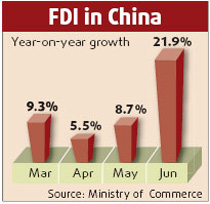Local business and industry associations should help Chinese firms make the most of the China-ASEAN free trade area (FTA).
So said Xu Ningning, deputy secretary-general of the China-ASEAN Business Council.
The FTA will see tariffs reduced on more than 90 percent of products from China and ASEAN members, amounting to savings for exporters from both sides.
Average tariffs will fall to almost zero in 2010 from 9.9 percent in 2005.
But "most Chinese companies are not aware of the FTA, let alone translating it into real benefits", said Xu.
China-ASEAN commodity trade agreements came into effect in July 2005. Tariffs were reduced on 3,400 goods that year. But thousands of Chinese exporters paid too much because they didn't apply for the necessary certificate for preferential tariffs.
From July 2005 to June 2006, 60 percent of ASEAN exports to China were made under the FTA framework. But only 17.9 percent of Chinese exports to ASEAN members were made under the FTA, according to the Ministry of Commerce.
"Chinese chambers of commerce and industry associations are to blame for this loss. They should take responsibility for publicizing the FTA among Chinese companies as soon as possible," Xu said.
FTA awareness is considered an important tool for exporters not just to save money but to protect against risk.
The FTA also pushes exporters to compete on the overseas market, as many manufactured goods or services from China and ASEAN members overlap.
(China Daily November 1, 2007)


